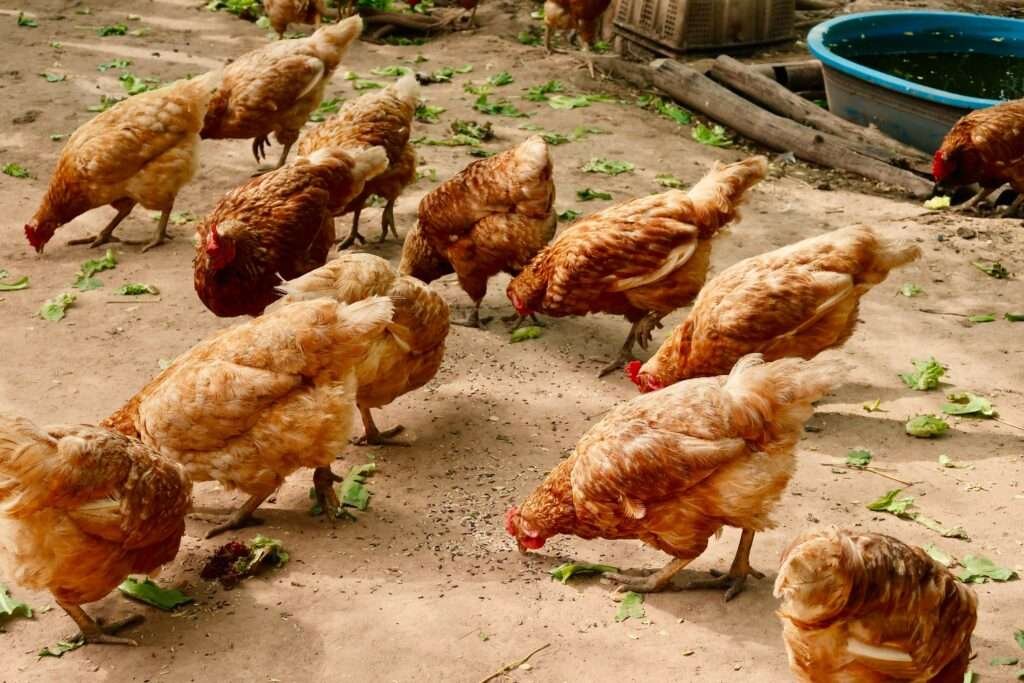Deciding on the number of chickens to get for your backyard flock is an important consideration that impacts egg production, space requirements, and overall management. While there is no one-size-fits-all answer to how many chickens, finding the ultimate flock size involves considering factors such as the desired number of daily eggs, available space, and the cost of feed. In this comprehensive guide, we’ll explore the key considerations and provide detailed insights to help you determine how many chickens are enough, without overwhelming your resources.
Daily Egg Production Goals: Assessing Your Needs
One of the primary factors in determining the number of chickens you should get is your daily egg production goal. Consider the following:
- Egg Production: On average, a healthy laying hen produces around 4-6 eggs per week, depending on the breed and age.
- Family Size and Preferences: Take into account the size of your family and their egg consumption habits. Consider whether you prefer a surplus of eggs for personal consumption, sharing with friends and neighbours, or potentially selling eggs locally.
- Future Expansion: Anticipate any potential changes in egg requirements. If you plan to expand your flock in the future, account for the additional eggs you’ll need when determining the initial flock size.

Available Space and Size Considerations: Coop and Run Requirements
The size and space available for your chickens play a crucial role in determining the appropriate flock size. Consider the following factors:
- Coop Size: Ensure your chicken coop provides enough space for your chosen flock size. As a general rule, allow for a minimum of 4 square feet per chicken inside the coop. For example, if you plan to have 6 chickens, the coop should be at least 24 square feet.
- Outdoor Run: Assess the size of your outdoor run to ensure sufficient space for your chickens to exercise, forage, and roam. Aim for a minimum of 8-10 square feet per chicken in the outdoor run area. For a flock of 6 chickens, the run should be at least 48-60 square feet.
- Zoning and Local Regulations: Familiarize yourself with any local regulations or restrictions regarding chicken ownership. Some areas may have limitations on the number of chickens allowed per square foot or specific coop and run requirements. Be sure to comply with these regulations to avoid any issues.
Feed and Cost Considerations: Evaluating the Financial Impact
Feeding your flock is an ongoing expense, and the number of chickens you keep directly affects the rate of feed consumption and associated costs. Consider the following factors:
- Feed Consumption: Chickens typically consume around 1/4 to 1/3 pound of feed per day per chicken, depending on their breed, age, and size. Multiply this figure by the desired flock size to estimate your daily feed requirements. For example, if you plan to have 6 chickens, you would need approximately 1.5 to 2 pounds of feed per day. If you can give them access to open areas such as gardens, lawns or paddocks, the feed bill will reduce as they supplement their diet with bugs etc.
- Feed Cost: Research the cost of feed in your area and calculate the potential monthly or yearly feed expenses based on your flock size. Keep in mind that feed prices may vary, so it’s essential to budget accordingly. If they are free range, you can get a more basic grain, but if they only have a small area, then a high quality layer mash would be best for them with any surplus kitchen scraps.
- Budget Considerations: Determine your budget for maintaining your flock, including feed costs, bedding, veterinary care, and other related expenses. Ensure you can comfortably afford the expenses associated with your chosen flock size.

Minimum Flock Size and Social Considerations
Chickens are social animals, and they thrive in the company of their flock mates. Consider the following:
- Minimum Flock Size: It is generally recommended to have a minimum of three chickens. This allows for social interaction and provides backup in case of illness or loss. If you have limited space or are new to chicken keeping, starting with a small flock is a sensible approach.
- Pecking Order Dynamics: Keep in mind that establishing a pecking order is a natural behaviour among chickens. Having a larger flock can help distribute dominance behaviours, reducing the chances of bullying and aggression. However, overcrowding can also lead to stress and conflict, so finding the right balance is crucial.
- Integrating New Chickens: If you plan to expand your flock in the future or introduce new chickens, consider the space and dynamics within your existing flock. Allow for adequate space and observe their interactions to ensure harmony among the chickens.
Egg Laying Rates and Estimations
Understanding the average laying rates and estimates can further guide your decision-making process:
- Laying Hens: On average, a healthy laying flock of 6 chickens can provide around 24-36 eggs per week. Can you use or give away that many eggs?
- Molting Periods and Seasonal Variations: Keep in mind that chickens go through molting periods, during which their egg production decreases or ceases temporarily. Additionally, egg production can vary with seasonal changes and daylight hours.
To sum it up:
Determining the ideal flock size involves careful consideration of your egg production goals, available space, and financial resources. By assessing your daily egg requirements, evaluating coop and run considerations, factoring in feed consumption and costs, and considering the social dynamics of chickens, you can strike the right balance. Remember, it’s important to start with a minimum flock size of three chickens for social interaction and consider future expansion plans. With a well-planned flock size, you’ll be able to enjoy a sustainable supply of eggs while providing a comfortable and enriching environment for your chickens.






